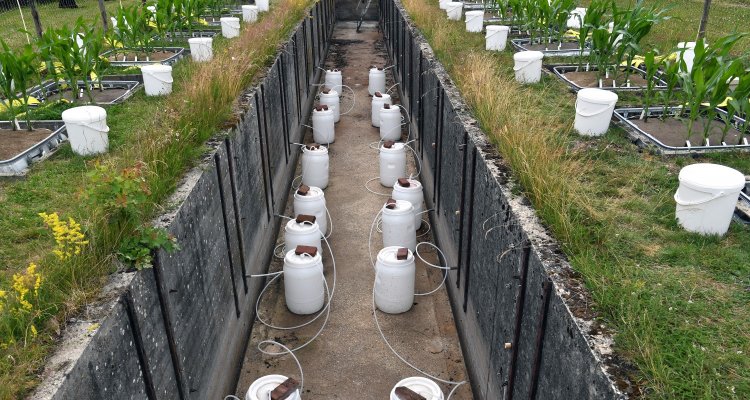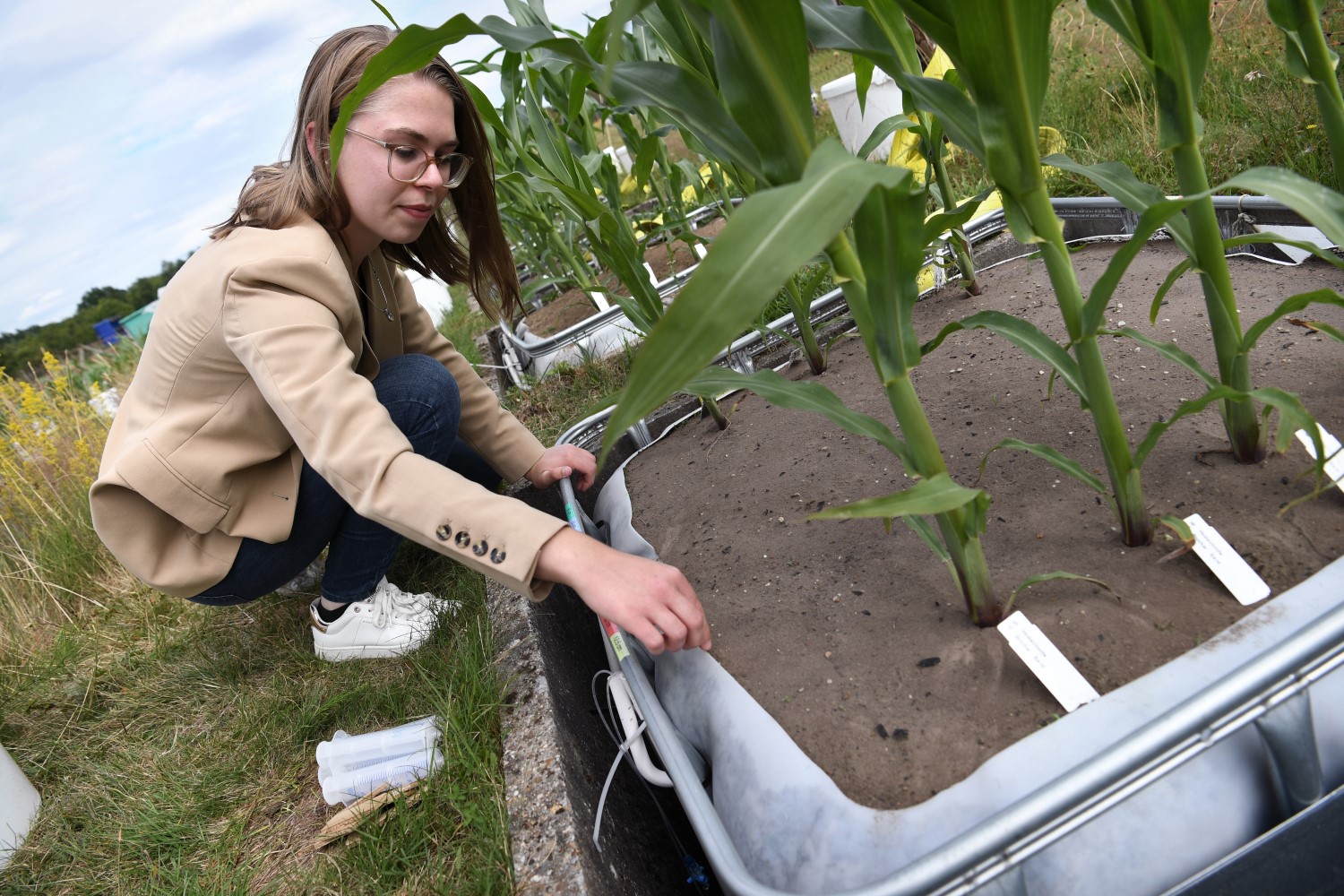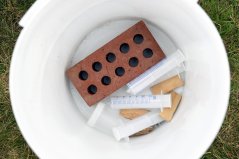
category_wageningen_world
Using crushed minerals to combat climate change
Can minerals help extract the greenhouse gas CO2 from the air? PhD student Emily te Pas is investigating the potential of spreading crushed silicate minerals on agricultural land. ‘This is still pioneering at this stage. It is important to collect data: does it work and is it safe?’’
Photo above: Marcel van den Bergh
At a testing site in Renkum, PhD student Emily te Pas is investigating whether the greenhouse gas CO2 can be extracted from the air by adding silicate minerals to agricultural soil. The underlying principle is literally as old as the hills. Silicate rocks
react with dissolved CO2 to bind this gas to bicarbonate, which can precipitate in the soil in the form of lime. When this happens naturally, it goes at a geological snail’s pace. But if you ground the minerals into grit, thought Utrecht geologist Olaf Schuiling 15 years ago, that weathering would take place within years or decades. Schuiling predicted that you could use olivine, the most reactive silicate and one of the most common minerals on earth, to extract CO2 from the air on a large scale and deploy it in the fight against
climate change.
Enhanced weathering
‘I encountered the concept of enhanced weathering when I was doing my MSc degree in Climate Studies in Wageningen,’ says Te Pas. ‘A lot of research is being done on how big the problem of climate change is. Personally, my main aim is to work on solutions, and enhanced weathering is one example. That’s what I wanted to focus on in my Master’s thesis.’ That led her to Mathilde Hagens of the Soil Chemistry and Chemical Soil Quality Group, who is now her co-supervisor. She conducted a laboratory experiment with different silicate minerals to get an initial idea of the effect of adding them to the soil on the soil chemistry. She received the 2020 Hissink Award from the Dutch Soil Science Association for best thesis of the year.
Benefits for the farmer
Te Pas declines to offer a back-of-a-beermat estimate of the quantities of the mineral you would need to sequester, say, the annual CO2 emissions from road traffic in the Netherlands. ‘The margins in the calculations vary enormously. What is certain is that you need to apply such minerals on a large scale; in the sea perhaps, or on large areas of land. My research focuses on their use in arable farming, which is a huge surface area worldwide.’

So Te Pas is also looking at the possible advantages for the farmer, such as improving soil fertility. The conversion of CO2 to bicarbonate and lime, for example, increases the pH of the soil, which can be beneficial to crops. But there are also risks. As the mineral olivine
weathers, for example, it releases the potentially dangerous nickel. One research question is: does that nickel run off into the groundwater, is it taken up by the crop or does it remain bound to soil particles?
Natural conditions
After her Master’s thesis, Te Pas wrote her own research proposal, and since then her research has outgrown the laboratory. At the testing site, a trial was recently started in ‘lysimeters’, which are concrete containers in the ground with equipment for measuring the soil hydrology. In this case, the concrete pits contain plastic containers filled with soil into which different types of minerals are mixed, and on which maize is grown.

Next to the lysimeters are white buckets with equipment for tapping moisture from the soil at various depths. Water that seeps right through the soil is collected in barrels lower down. Over the course of several years, Te Pas wants to determine how much CO2 is sequestered, which chemical substances are formed, whether they leach out, and how the crop reacts to all this. ‘The focus is on the chemical soil processes, but I also want to look at the link with agriculture. This is a trial under reasonably natural conditions, where we can monitor and control what happens in the soil.’
Life cycle assessments
For the time being, there are still many unanswered questions, the PhD student emphasizes. ‘This is still pioneering at this stage. It is important to collect data: does it work and is it safe? I mainly focus on soil chemistry, but there are many other questions. Elsewhere, for example, work is being done on life cycle assessments: what are the real benefits of this? Minerals have to be mined, transported and crushed, for example, which causes CO2 emissions too. And yet enhanced weathering also provides opportunities to use waste streams from mines, which in turn contributes to circularity.’
‘Besides reducing emissions, we need new techniques as well, to combat climate change
According to Te Pas, the latest IPCC report makes it clear that we are not going to achieve the Paris Agreement targets without techniques such as this, not even if we manage to significantly reduce greenhouse gas emissions. Besides reducing emissions, we need new techniques as well, to combat climate change. For me, that is one of the main reasons for working on this.’